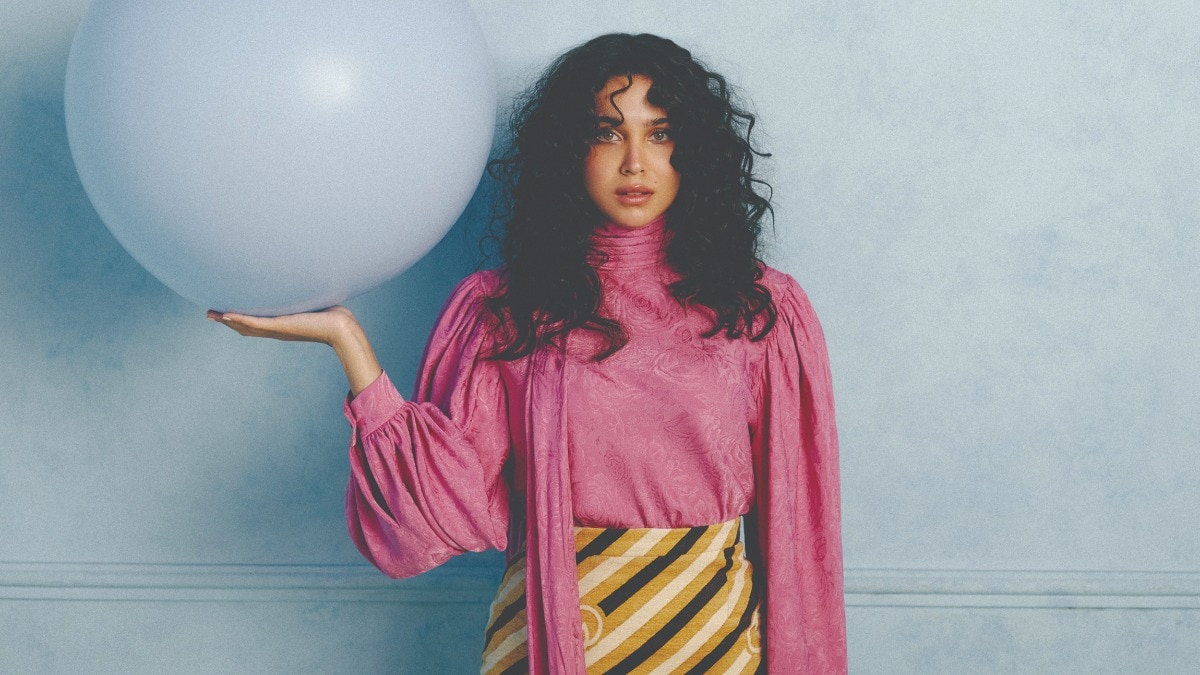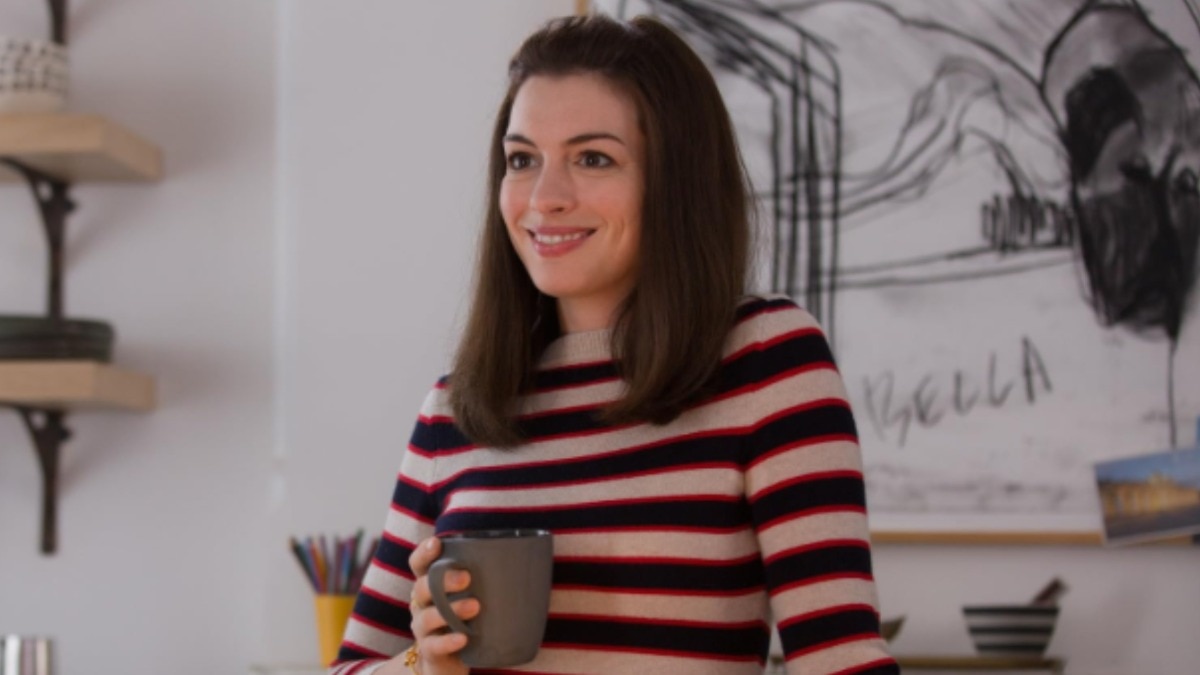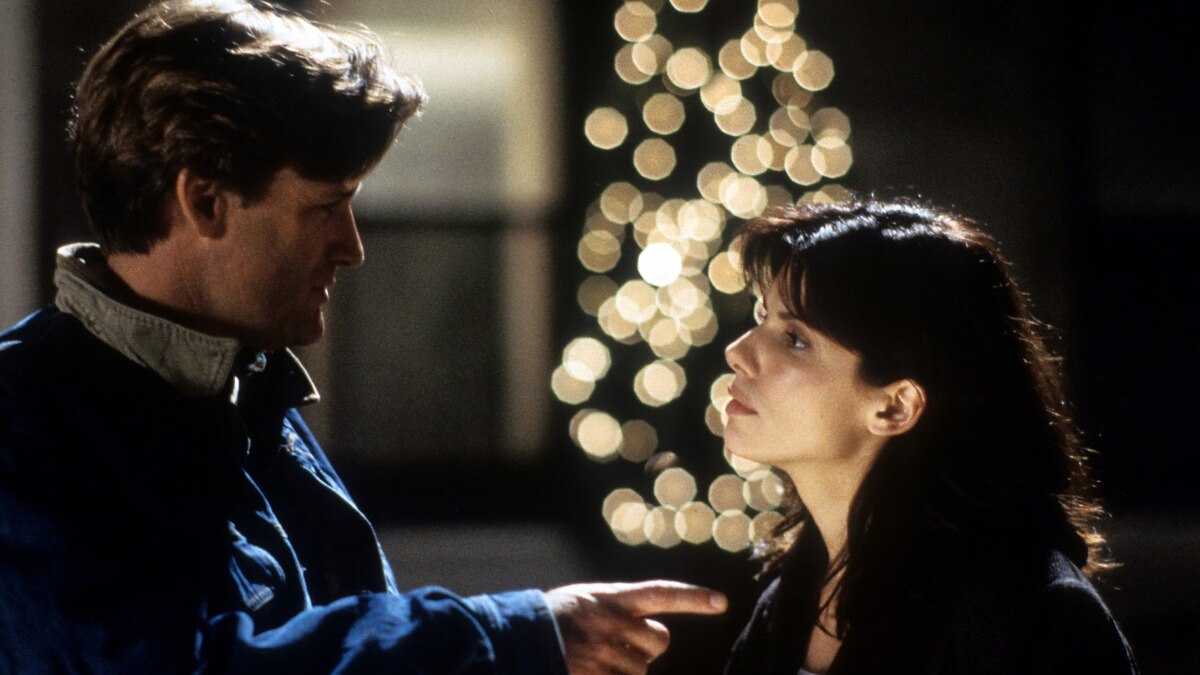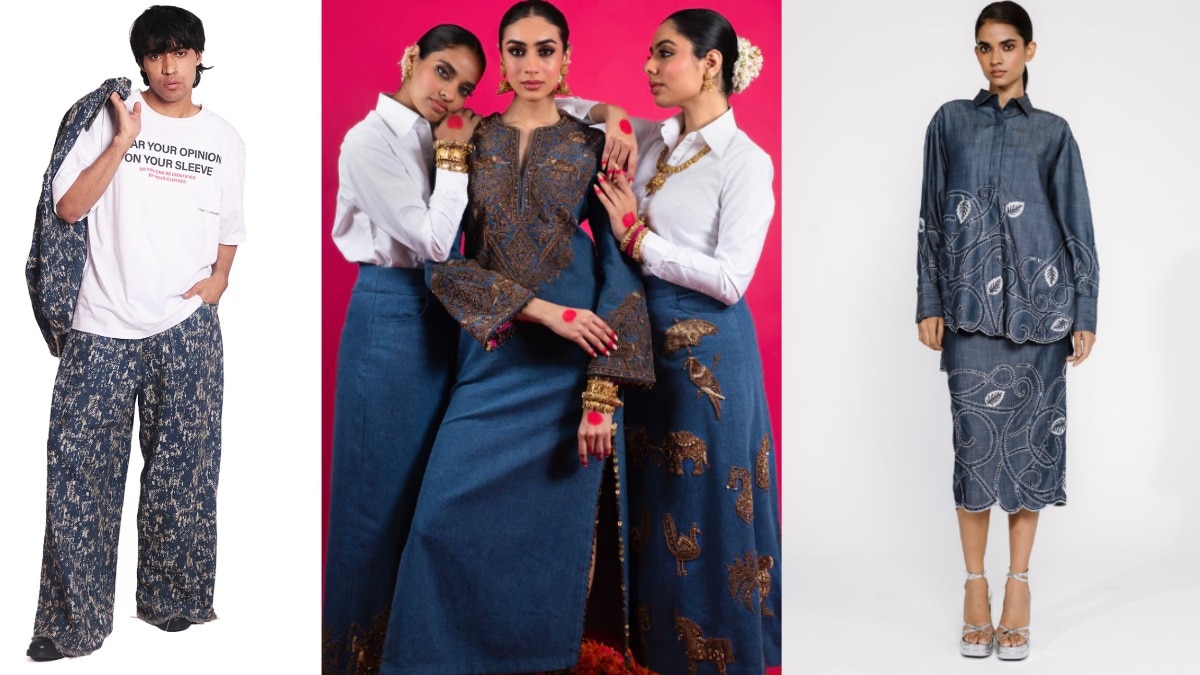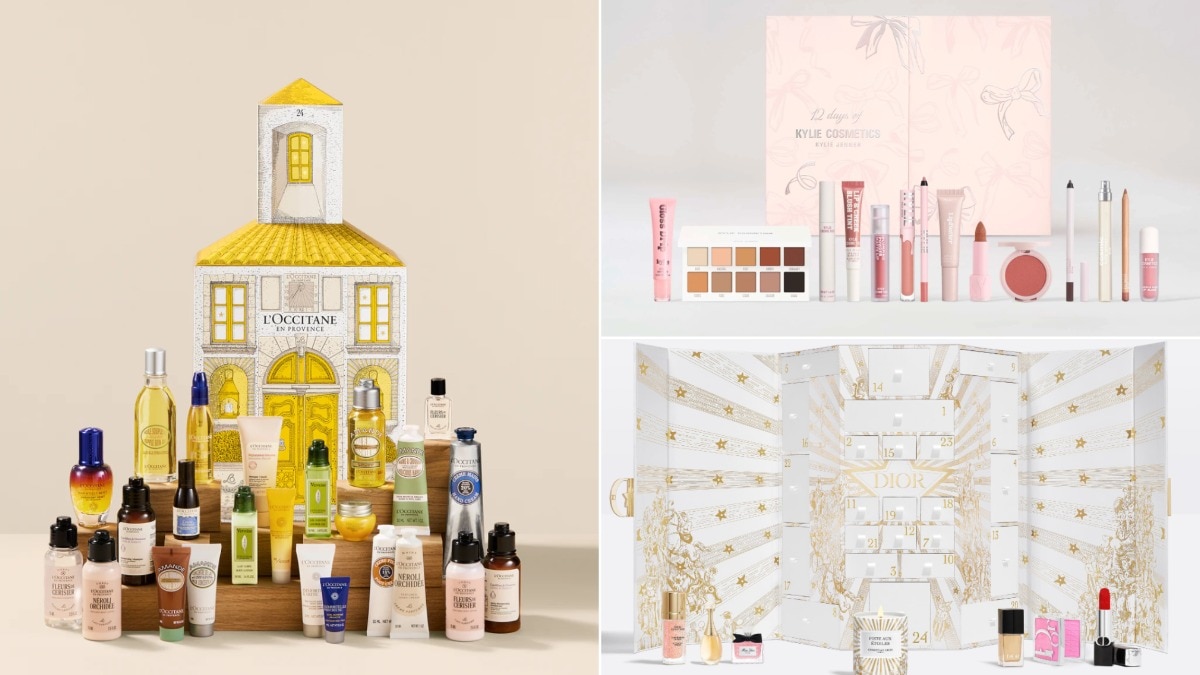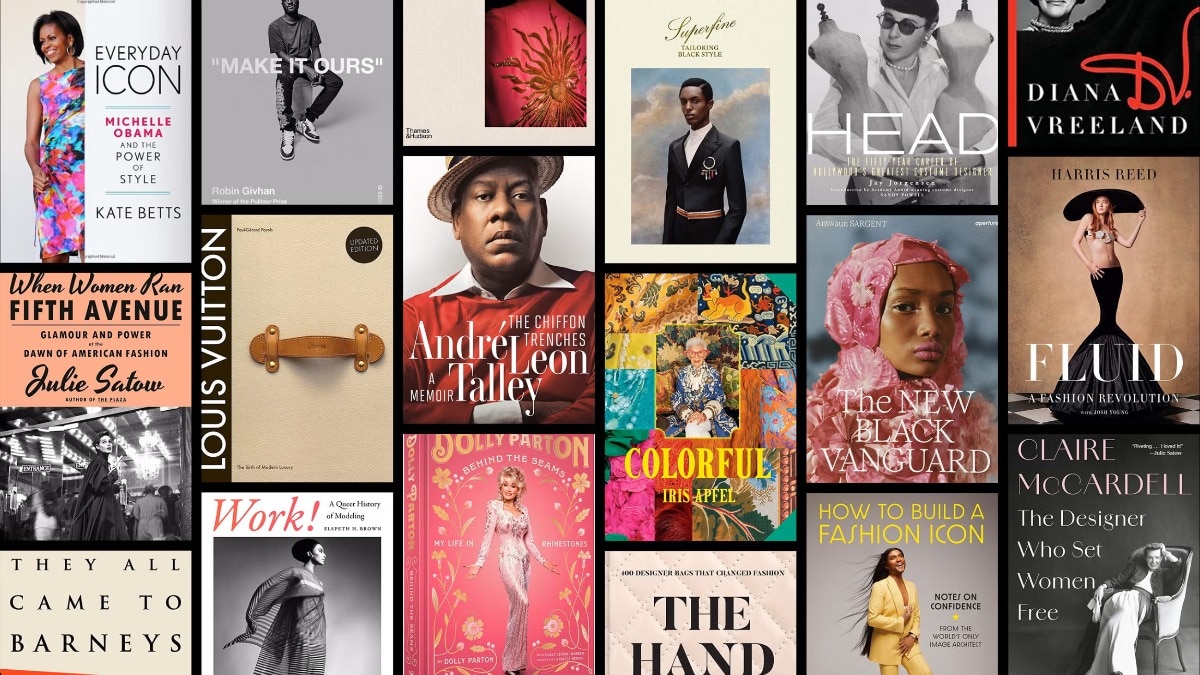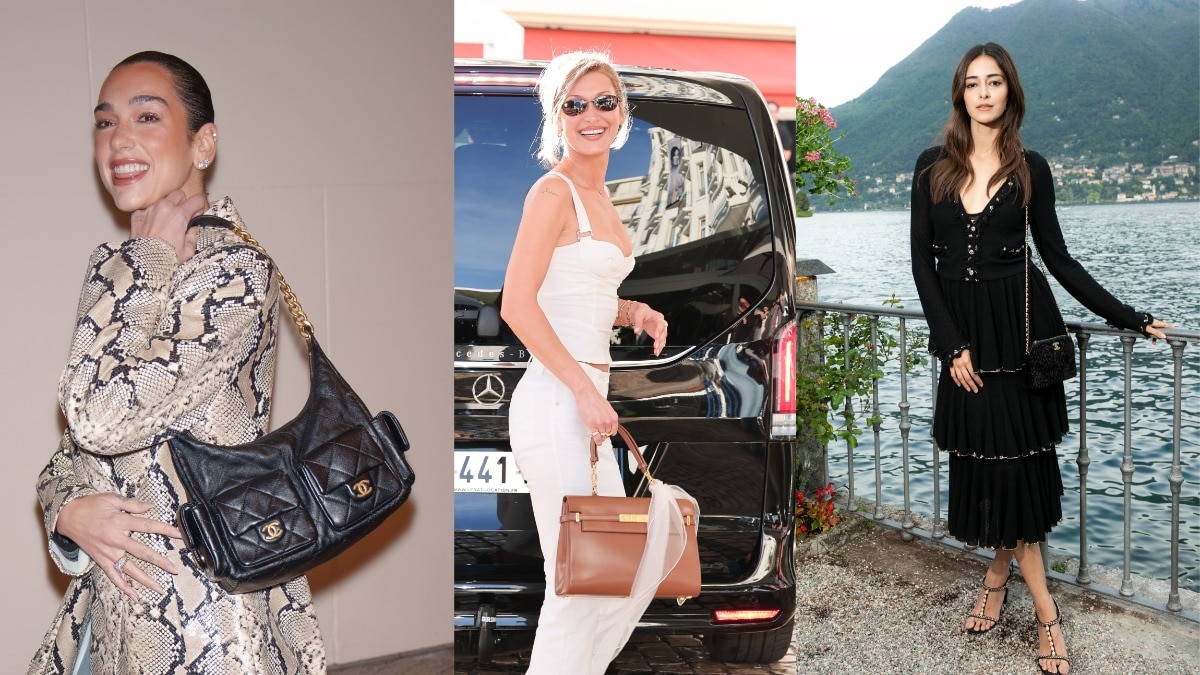
How Sarah Hoover continues to reinvent the New York multihyphenate, in cartoon-pink Chanel
The curator, writer, fundraiser, and gal-about-town does it, one move at a time.


Thirty-two inches below the collarbone: That is the length that Sarah Hoover gets all her clothes hemmed. “I do it to my nightgowns too,” she tells me. This glamorous detail feels like a natural extension of Hoover’s overall sensibility. On evenings out at art openings, society galas, or fashion dinners, she will pair her miniskirts with heels that make her a solid six feet tall.
Hoover, 37, is a particular kind of New York enigma, one of those magnetic people with a string of titles who always seem to be wherever culture is converging, all while enjoying every minute of it. She is an art-world connector, having worked at New York’s Gagosian gallery for more than a decade. She is a writer whose vulnerable confessions about motherhood have resonated with new and prospective moms. She is on the board of the arts non-profits Art Production Fund and Recess Art, and she co-founded the Accelerator Committee at American Ballet Theatre, which advocates for more choreographic initiatives led by women. Hoover is also, obviously, very fun. She tells me, half-jokingly, that her greatest skill is “finding friends who play nice with others.”

A glance at Hoover’s Instagram reveals a dichotomy at play. Official event photos from evenings out broadcast her bold fashion choices (often monochromatic, frequently hot pink, always something glittering) and are paired with wry, self-aware captions, often with a political slant. In a post from the Rosewood Baha Mar in the Bahamas, in which Hoover is wearing a floral-printed chiffon Valentino dress, the caption reads, “In the seminal feminist text The Feminine Mystique, Betty Friedan talks about ‘frilly blouse syndrome’ which is when women wear overtly feminine clothing in order to subvert patriarchal suspicion as an act of innocuous protest.” She continues, “I am no doctor but I think my diagnosis is positive!!!”
People often have trouble reconciling complexity served hand in hand with a performance of classic femininity. From my experience, that discomfort can often make things very fun for the one who is causing it. This is precisely what appealed to Emily Ratajkowski, who counts Hoover as one of her best friends. “I looked her up on Instagram, and I saw her captions and was like, ‘Oh my God, this person is amazing,’ and I want to be her friend.… I essentially hit on her.” Hoover and Ratajkowski often send each other pages of their writing for feedback. “She really encouraged me to write, which is, I feel, a big part of our relationship,” Ratajkowski says.
When Hoover and I meet, she is embarking on a new adventure. It is October in New York, and the weather is just cool enough to throw on a jacket. The buildings glimmer, illuminated by the gold autumn light. She is a year out from leaving Gagosian, where she had spent the previous decade and a half working her way up from assistant to director. It was through the gallery that she met her husband since 2012, the acclaimed artist Tom Sachs, who is known for his winking critiques of capitalist and consumer culture. ('The Vows' column in The New York Times detailing their meet-cute reported that Hoover answered the front-desk phone when Sachs called. “She was very sassy,” he said.) Hoover’s ease on the social circuit owes much to her time spent managing the many eccentric personalities found in the art world. “Thank God I’ve been in therapy for so fucking long because I feel like I’m good at understanding what people really mean when they’re having a tantrum or whatever,” she says.

Hoover describes herself now as “an art historian, writer, and cultural critic.” Brands will often engage her to moderate talks on art, motherhood, and fashion. Her newest project is a memoir detailing the postpartum depression she experienced after the birth of her son, Guy, who is now five.
“I had horrible, crazy postpartum depression,” she says. “I was one of those crazy people you’d read about who heard voices and had a complete and total mental breakdown.” Hoover faithfully journals every day and, during quarantine, decided to look back on what she’d written during that period—albeit with some hesitation, fearing the pages might act as a trigger. “One day I did it, and I was like, ‘Wait, this is so outrageous that it’s actually kind of funny, so maybe I’ll try and turn it into an essay.’ And then my essay became 30,000 words and then 60,000 words.”
Hoover recently sold her book to Simon & Schuster, and it is currently being adapted for television. She hopes it will be a counternarrative to the many prevailing stories told about motherhood. “I felt lied to by every possible cultural narrative,” she says.
Hoover tells me she experienced a “rupture” in her identity after Guy was born, whereas her husband was simply able to go back to work the day they got home from the hospital. This frank kind of confession might go over badly in some partnerships, but she assures me that when her husband read her manuscript, his one note was to make him sound worse. There is a sense that what propels Hoover to keep writing and speaking on this particular experience comes from a place beyond her. “I cannot continue to live in a world that makes women go as crazy as I did for not feeling the way everyone else is supposed to feel about being a mom,” she says with an almost matter-of-fact shrug.
On the day we meet, Hoover has planned a full itinerary. After a personal tour with the senior curatorial assistant of the new Edward Hopper show at the Whitney Museum, we are to have dinner and drinks, then go to Lincoln Center for the ballet. After moving to the city to study art history at NYU, she’s lived here ever since. “I wanted to be somewhere I could be intellectually active all the time,” she says. She describes it as your brain being on fire: “Once I got to New York, I could have that feeling every day if I wanted to.”

Hoover grew up in Indianapolis. Her parents met in law school as her mother collected books for the semester on her first day. “I’ve never seen them fight,” Hoover says. “They love each other possibly too much.” She admits they are eccentric and have always been progressive in a red state. Her dad, John, is a corporate litigator, and her mom, Martha, spent time as a sex-crimes prosecutor before leaving law to enter the restaurant industry in 1989. Noticing a gap between the produce grown in Indiana and what ended up on her kitchen table, Martha was integral in starting a farm-to table movement in the Midwest. She now has 13 restaurants under the Patachou umbrella, with a mission to fight for food equity. Sarah notes with daughterly pride that her mother is the single largest supporter of family-owned farms in the region.
Hoover does not shy away from expressing enthusiasm. “I’m really fortunate that I grew up (in Indiana) because I’m the opposite of jaded,” she says. “I hate cynicism,” she proclaims later from the back of a car on our way downtown. The statement feels rebellious; it takes a lot of gumption to resist something so easily available. There are parts of New York where nihilism is a form of currency.
Over dinner at Fiorello’s across from Lincoln Center (“It looks like a tourist trap, but it’s so good”), we split a Caesar salad and a pizza, and she orders a vodka on the rocks with a splash of cranberry. I playfully chide her for the drink, as she had just announced we would “drink martinis until we get to champagne” at the ballet. My ears remain plugged from the flight I took into the city that afternoon, and Hoover is concerned: “Are you in pain?!” As though if I said yes, it would be completely fine to skip the ballet.
Hoover is wearing an all-black Louis Vuitton ensemble paired with sneakers. As we walk into Lincoln Center for the ballet, we are taken aback by the amount of sequins in the audience, to the point of wondering if we had missed the memo. Having never gone to the ballet before, I had asked her what was appropriate to wear, and she texted me saying flats or sneakers. I opted for a Mary Jane with a low heel. As Hoover walks a little ahead of me to our seats, I note that being around her makes everyone else feel overdressed—and that is a kind of power.

“I think, in general, people who are really and truly themselves scare people,” says curator Kimberly Drew, a friend of Hoover’s. She later adds, “Sarah is herself 24 hours a day, and it inspires me to be more myself too.” Ratajkowski, who first met Hoover at the Chateau Marmont in L.A., notes, “That was one of the first things I was struck by, her self-expression through the way she plays with femininity and being kind of like a doll with blond hair, wearing pink. She plays with expectations in a really fun way.”
When she was 12, Hoover saw a performance of Glass Pieces, set to the music of Philip Glass and choreographed by Jerome Robbins, that she says changed her life. She tells me that before that ballet, she never knew music could sound like that. There is a direct co-relation between Hoover’s love of New York and this abstract ballet, where in its first movement, 36 dancers set out across the stage, seemingly with no rehearsed path. It has the distinct rhythm of a city at rush hour, where people hurry to get where they need to go but their destination stays a mystery to you.
Hoover often mentions her feelings of doubt and a lingering impostor syndrome. “I feel profoundly uncool, like I have never quite fit in in New York or will fit in, but I’m also very happy with the way my life is working out for right now,” she tells me. Earlier in the evening, at the Hopper exhibit, Hoover had been typing away on her phone. She assured the curator she was not texting but taking notes. It is something that I notice at the ballet as she studies the playbill. Hoover’s approach to life is that of a student, voracious to learn and absorb whatever she can about the world around her. It’s how she approaches writing now. She’s not intimidated by what she doesn’t know; it is a fuel that she is eager to put into ignition. She’s more interested in expanding her world than preserving its insularity.
Feature Image: @sarahhoov/Instagram
Images: Instagram
This piece originally appeared in Harper's Bazaar US Dec 2022/Jan 2023 edition

